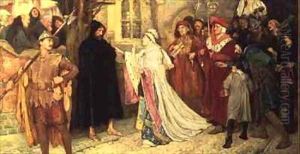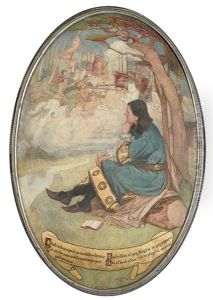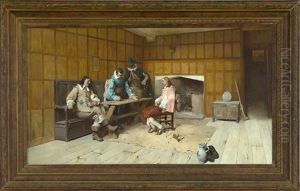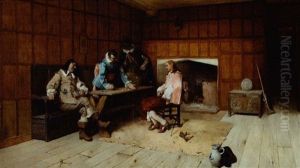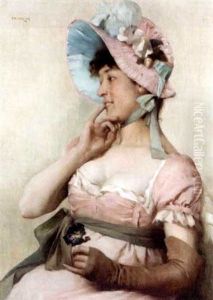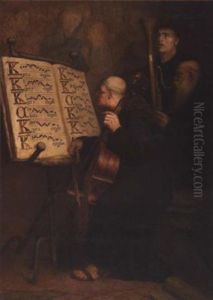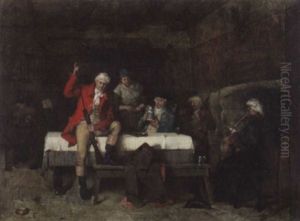Frederick William Davis Paintings
Frederick William Davis was an American painter who lived during the late 19th and early 20th centuries, known for his landscape paintings and his mastery of the watercolor medium. Born in 1862, Davis began his career as an artist at a time when the United States was undergoing significant cultural and artistic changes, with American artists beginning to form their own styles distinct from European influences.
Davis received his artistic training at the National Academy of Design in New York and continued his studies in Paris at the Académie Julian, a popular institution among American and international students. There, he was influenced by the French Barbizon School, which emphasized painting landscapes en plein air (outdoors) and was a precursor to Impressionism. Davis absorbed these techniques and developed his own style characterized by a keen observation of light and atmosphere.
Upon his return to the United States, Davis became an active member of the art community. He exhibited his work at various institutions, including the Pennsylvania Academy of the Fine Arts and the Art Institute of Chicago. His work was well-received, and he gained a reputation for his delicate watercolors that often depicted the rural landscapes of New England. Davis's mastery of watercolor was evident in his ability to capture the transient effects of light and his sensitive rendering of the natural world.
In addition to landscapes, Davis also painted city scenes and was proficient in oil painting, though he is primarily remembered for his work in watercolor. Throughout his career, he was a member of several prestigious art organizations, such as the American Watercolor Society and the National Arts Club.
Frederick William Davis continued to paint and exhibit his work until his death in 1936. While he may not be as widely recognized as some of his contemporaries, his contributions to American art, particularly in the realm of watercolor landscape painting, have earned him a place in the history of American art. Not only do his works reflect the evolution of American landscape painting at the turn of the century, but they also continue to be appreciated for their tranquility, technical skill, and beauty.
